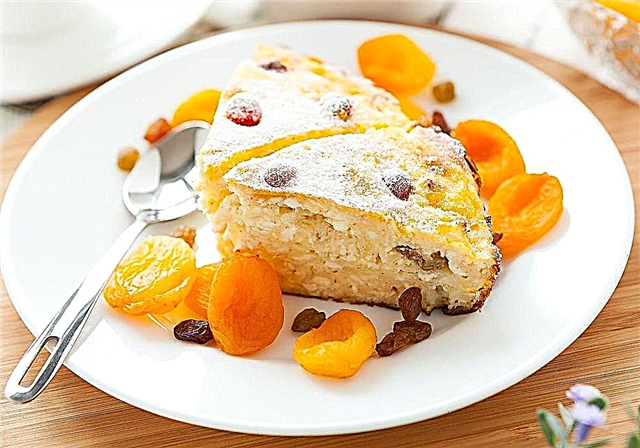
At the age of six months, babies begin their acquaintance with first courses, which are different from breast milk. Bottle-fed crumbs do it a month or two earlier, trying vegetables or porridge. When the time comes for fruit, parents think about which fruit to start with. Pediatricians advise with an apple, so let's look at what is the use of such a fruit, at what age and in what form it can be given to a baby, and also how to choose the best and high-quality apples for a baby.

Benefit
Apples are a source of a large amount of substances valuable for the child's body. Among them are pectins and fiber, which help to remove harmful elements from the intestines and improve digestive function. A fresh apple will quench your thirst and increase your appetite, as it is rich in water and organic salts.
Freshly picked apples are a valuable source of vitamin C, magnesium, phosphorus, zinc, B vitamins, copper and other minerals. These fruits contain fruit sugar that will energize your baby. In addition, apples contain a lot of flavonoids, so these fresh fruits are especially important in the diet of children living in large cities.
Dentists also advise children to eat apples, as this fruit provides gum massage, cleansing the space between teeth and removing plaque. This will protect baby teeth from caries.
Harm
If you are going to give your child an apple, you should remember that some varieties of these fruits can be dangerous for babies prone to allergies. We are talking about red apples, which, even after peeling, can cause a reaction in babies. But the use of green fruits extremely rarely can give allergies, and therefore it is advised to start the introduction of apples into the children's diet with green fruits.

Also, many children react to the appearance of apples on the menu by changing the chair. Even if the crumb tolerates this fruit perfectly, but eats it in excess, it will suffer from flatulence and bloating. In addition, a large number of apples, due to the effect on acidity in the stomach, can cause gastritis.
From how many months is it better to give to babies?
Babies who started feeding at 4 months of age since they are bottle-fed, or the nursing mother does not have enough milk or for another reason, an apple can be given at 5 months. It is introduced in the form of applesauce in the fourth feeding - giving the crumbs up to 30 grams of this fruit, the baby is fed with milk (breast milk or formula).
Six-month-old bottle-fed babies can eat already 60 grams of applesauce in 4 meals.
At this age, the apple can also be introduced to breastfed babies who have already tried vegetable complementary foods and their first porridge. Such children are given applesauce in an amount of up to 30 grams.
At the age of seven months, babies can eat 60-70 grams of applesauce. At the same time, artificial crumbs for 7 months can already be given apple juice to taste. They begin to add it in the third feeding, first with a small amount, increasing to 30 ml. For babies who are breastfed, apple juice is given from 8 months.

How to make apples for the first feeding?
Puree
The peeled apple is rubbed on a plastic grater so as not to lose vitamin C. The resulting puree without sweetening is offered to toddler in small quantities (up to half a teaspoon).
For the first tests, it will be enough to scrape off some apple pulp from the whole peeled fruit. Later, when the applesauce is larger, some moms may find it more convenient to use a blender to grind these fruits.
2-3 weeks after the start of the introduction of fruit complementary foods in the form of an apple, the baby can be given a combination of apples and other fruits, as well as vegetables. These fruits go well with apricot, pear, pumpkin, carrot. In addition, for a growing baby trying other types of complementary foods, apples can be mixed with cottage cheese and fermented milk drinks.

The juice
As in the case of applesauce, acquaintance with juices begins with products from green apple varieties. The first juice for the baby is always clarified, and juices with pulp should be given a little later. Apple juice is often mixed with other juices such as apricot, pear, carrot, and peach.
Apple juice is usually given to babies at lunchtime. The first portion of juice should be small, for example, half or even a quarter of a teaspoon. If the toddler feels normal, the next day the amount of juice from the apple can be doubled.

Dr. Komarovsky believes that fiber is very important for a child, therefore, when choosing "puree or juice", preference should be given to the former. See the following video about this.
Baked apples
If the crumbs have an increased risk of allergic reactions to new foods, it is best to introduce the baby to the apple in a baked form. It is very easy to prepare such an apple. Place the washed and peeled fruit (do not remove the skin) in a preheated oven. After 15 minutes, take out the apples, cool, then take out the pulp with a spoon, mash it a little in a cup and you can give the toddler.
The advantage of eating baked apples is called easier digestion, and the disadvantage is the destruction of a certain amount of nutrients during heat treatment. After introducing crumbs of cottage cheese into the diet, apples can be baked with it. For the 2nd birthday, the baby can cook a baked apple with cinnamon and honey (of course, provided that there is no allergy).

It is not recommended to give an apple to a child in its entirety, as apple pieces can enter the respiratory tract, which can be life-threatening for the baby.
Compote
Dried apples can be boiled comfort. This will be an excellent solution for feeding babies prone to allergies. Pour a few slices of dried apples with water and cook on the stove for 15 minutes after boiling. For the first samples, the drink should only have a slight apple flavor. With a pronounced taste, dilute it with boiled water before serving the compote. For the first test, 1 tsp is enough for a child.
If you are not allergic, increase the concentration of dried apples, and after a while, try adding applesauce to your diet.

Tips for choosing
Examine the fruit carefully and look for apples without brown spots or dots. Good quality apples should be quite strong to the touch. Do not buy soft fruits, as they may turn out to be rotten on the inside, frozen or with flabby pulp. And be sure to smell the fruit - if the apple has a faint smell, then the taste is often not pronounced, and an unpleasant smell will tell you that the fruit has begun to deteriorate.
To preserve the fruit, the apple is often greased with a wax coating. It is better to buy apples without it or peel off the peel before giving it to the child.

E. Komarovsky's opinion
The famous pediatrician calls apples the best choice as the first fruit food for a baby up to one year old. Komarovsky advises to introduce an apple into the children's diet no earlier than you find the first tooth in the baby's mouth. In addition, a popular doctor focuses the attention of parents on the dangers of an apple if given in a large piece.
When the baby chews on a slice of an apple, it can bite off a large piece, as a result of which the baby runs the risk of choking. So, if the baby does not suck the apple and does not scratch the gums with it, it is too early to give slices of this healthy fruit to the baby, according to Komarovsky.
If you are afraid that the baby will choke, we recommend using a special feeding net - a convenient device that has long been included in the list of things that facilitate the introduction of new products into the baby's diet.
For information on whether it is possible to increase the hemoglobin of a child with the help of apple juice, see the next program.
Find out if your child's weight is normal using the following calculator.



